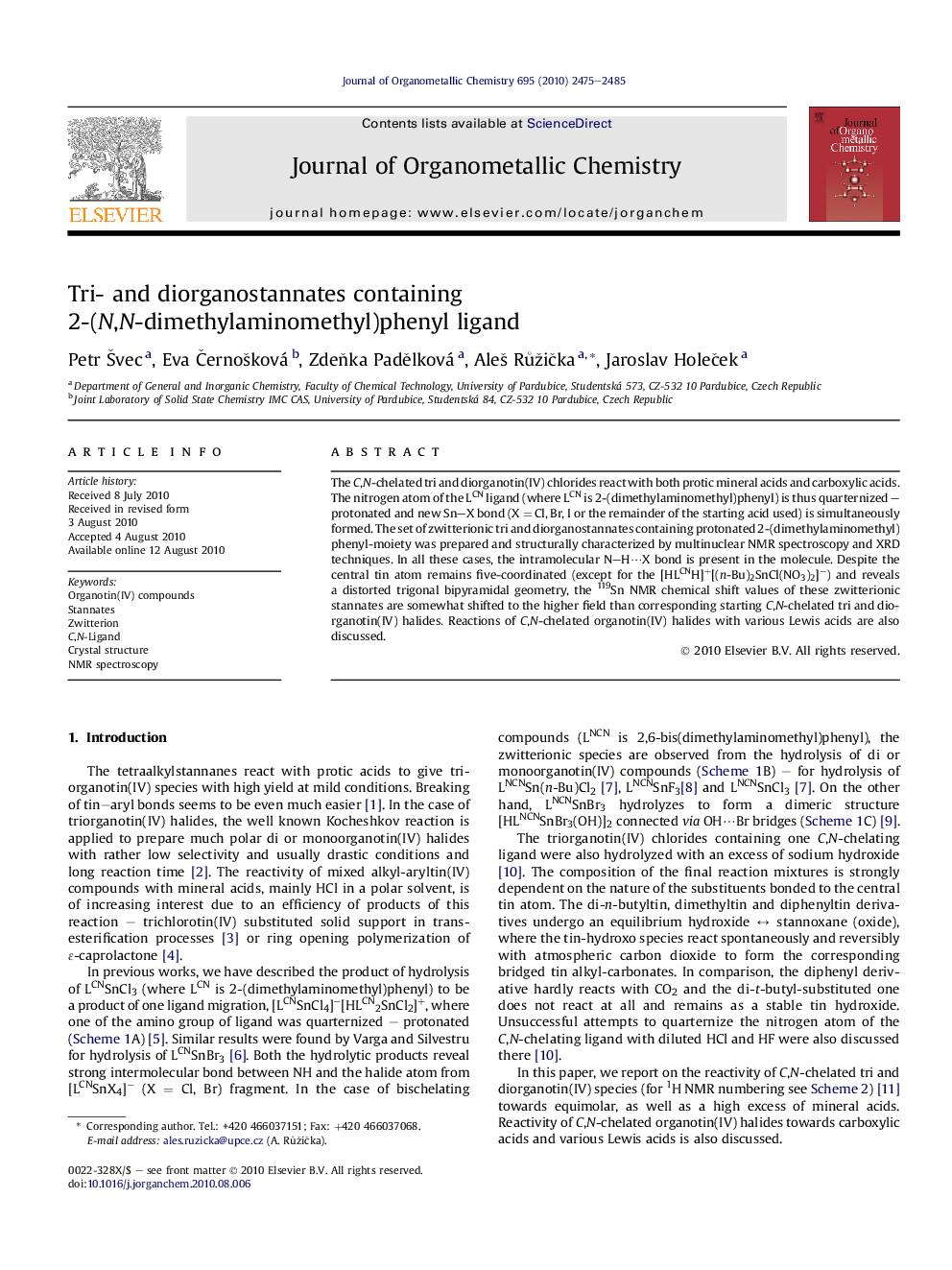| Article ID | Journal | Published Year | Pages | File Type |
|---|---|---|---|---|
| 1326791 | Journal of Organometallic Chemistry | 2010 | 11 Pages |
The C,N-chelated tri and diorganotin(IV) chlorides react with both protic mineral acids and carboxylic acids. The nitrogen atom of the LCN ligand (where LCN is 2-(dimethylaminomethyl)phenyl) is thus quarternized – protonated and new Sn–X bond (X = Cl, Br, I or the remainder of the starting acid used) is simultaneously formed. The set of zwitterionic tri and diorganostannates containing protonated 2-(dimethylaminomethyl)phenyl-moiety was prepared and structurally characterized by multinuclear NMR spectroscopy and XRD techniques. In all these cases, the intramolecular N–H⋯X bond is present in the molecule. Despite the central tin atom remains five-coordinated (except for the [HLCNH]+[(n-Bu)2SnCl(NO3)2]−) and reveals a distorted trigonal bipyramidal geometry, the 119Sn NMR chemical shift values of these zwitterionic stannates are somewhat shifted to the higher field than corresponding starting C,N-chelated tri and diorganotin(IV) halides. Reactions of C,N-chelated organotin(IV) halides with various Lewis acids are also discussed.
Graphical abstractThe products of reactions of the C,N-chelated tri and diorganotin(IV) halides with protic mineral, carboxylic and various Lewis acids were studied by multinuclear NMR spectroscopy and XRD techniques.Figure optionsDownload full-size imageDownload as PowerPoint slide
